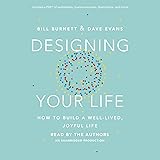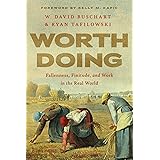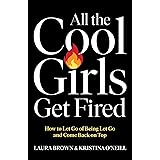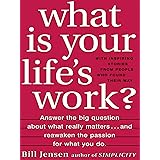Navigating the complex landscape of job interviews can be one of the most stressful yet pivotal experiences in a professional’s career. The pressure to perform, to articulate one’s value, and to stand out from a pool of qualified candidates is immense. It’s often approached from the perspective of the applicant, focusing on what *they* need to do to impress. However, as the accompanying video insightfully highlights, understanding the process from an employer’s viewpoint can fundamentally shift one’s strategy and significantly boost success rates.
The speaker in the video, drawing from extensive experience conducting hundreds, if not thousands, of interviews, offers a rare glimpse into the mind of a hiring manager. These aren’t just generic tips; they are insights gleaned from the frontline of recruitment, revealing what genuinely impresses—and what doesn’t. This article expands on these critical strategies, providing a more detailed blueprint for job seekers aiming to not just participate, but to truly crush their next job interview by understanding the subtle signals and powerful actions that resonate with employers.
Mastering the Job Interview: An Employer’s Blueprint for Success
The journey to securing a new role doesn’t begin when you sit down for the interview, nor does it end when you shake hands and leave. It’s a three-phase process: what happens before, during, and after. Each stage presents unique opportunities to differentiate yourself and demonstrate your potential value. By adopting an employer-centric mindset, you move beyond mere participation to strategic engagement, turning each step into a calculated move towards career advancement.
The Foundation: Strategic Preparation Before Your Job Interview
Before you even step into the interview room, or log into a virtual call, the groundwork you lay speaks volumes about your work ethic and dedication. The video emphasizes extensive company research, citing a CFO candidate whose depth of knowledge was “so impressive.” This wasn’t just skimming the ‘About Us’ page; it was a profound dive into the company’s ecosystem.
To truly impress, your research should go beyond basic facts:
- Company History & Mission: Understand the foundational values and the journey that has shaped the organization. How do their origins inform their present trajectory?
- Recent News & Press Releases: Look for mergers, acquisitions, new product launches, significant hires, or challenges. This demonstrates you’re up-to-date and invested in their current affairs.
- Leadership Team: Familiarize yourself with key executives. LinkedIn is invaluable here. Understanding their backgrounds can provide context for the company’s direction and culture.
- Products/Services: Beyond just knowing what they offer, understand the market need they fulfill, their competitive advantages, and any potential areas for innovation.
- Company Culture: Explore platforms like Glassdoor or LinkedIn to get a sense of the workplace environment. Does it align with your values?
- Industry Trends & Challenges: How is the broader industry evolving? What are the major disruptors or opportunities? Being able to speak to these shows strategic thinking.
The goal isn’t just to regurgitate facts, but to synthesize this information and relate it directly to the role you’re applying for. For instance, if the company recently expanded into a new market, consider how your skills could contribute to that expansion. If they’re facing a specific industry challenge, think about solutions you could bring to the table.
A proactive reach-out, as demonstrated by the CFO candidate in the video who sent an email via LinkedIn, can also set a powerful precedent. This isn’t about asking for more information; it’s about reiterating your enthusiasm, confirming your appointment, and subtly showcasing your professional communication skills before the formal meeting. It signals organization and keen interest, traits highly valued by any employer looking for a committed team member.
Navigating the Interview Day: Authenticity Over Overselling
During the interview itself, a common pitfall is the temptation to oversell or exaggerate one’s capabilities. While the impulse to present oneself in the best possible light is natural, the video’s speaker warns that this approach often backfires, leading to a “very short sale” in a professional relationship. Instead, employers value directness and self-awareness.
Consider the example shared: an interviewee candidly admitted not knowing much about a specific area but then confidently articulated their extensive knowledge in related fields. This honesty fosters immediate trust. It communicates that you understand your strengths and limitations, a critical trait for any employee. It suggests that you are not afraid to learn and that you possess the integrity to admit when you need to acquire new skills, rather than pretending to have them from the outset.
This isn’t to say you shouldn’t highlight your accomplishments; rather, it’s about framing your answers with genuine self-assessment. If asked about a skill you possess partially, you might say: “While I haven’t had extensive direct experience with [specific software], my background in [related software/skill] has equipped me with a strong foundational understanding of similar systems. I am a rapid learner, and I am confident that with a focused course or dedicated training, as I have done with [example], I could quickly become proficient.” This approach shows initiative, a growth mindset, and realistic self-appraisal.
Employers seek individuals who can match their genuine skills and values with the specific needs of the business. This means actively listening to the questions, understanding the core competencies required for the role, and then articulating how your unique gifts and strengths align. If there’s a perceived gap, turn it into an opportunity to demonstrate your adaptability and eagerness to contribute. The focus should always be on establishing credibility and building a relationship based on transparent communication, ensuring there are no unpleasant surprises down the line.
The Critical Follow-Up: Making a Lasting Impression After Your Job Interview
The period immediately following the interview is often overlooked, yet it presents one of the most potent opportunities to solidify your candidacy. The speaker recounts a telling statistic: out of seven recent interviews, only one candidate sent a follow-up message. This single action, performed by the most qualified individual, left a profound mark. It underscored their professionalism and made them stand out in a competitive field.
A well-crafted follow-up email or thank-you note is more than just a courtesy; it’s a strategic tool. It serves several crucial purposes:
- Reiterate Interest: It confirms your enthusiasm for the role and the company, showing continued engagement.
- Reinforce Key Points: You can briefly reiterate a specific point or two that you discussed, highlighting how your skills align with a particular challenge or opportunity mentioned during the interview.
- Address Omissions: If you forgot to mention something important or wish to clarify an answer, the follow-up is an appropriate place to do so concisely.
- Demonstrate Professionalism: It showcases your attention to detail, strong communication skills, and appreciation for the interviewer’s time.
- Keep Your Name Top of Mind: In the decision-making process, your name will be recalled positively, especially when only a few candidates bother to send one.
What makes a follow-up truly impactful, as highlighted by the exemplary candidate in the video, is its personalized nature and genuine tone. It should thank the interviewer for their time, reference something specific discussed during the conversation, and reiterate your unique value proposition. For example: “Thank you so much for your time today. I particularly enjoyed our discussion about [specific project/challenge], and I am confident that my experience in [relevant skill] would allow me to contribute significantly to your goals in this area. I am genuinely excited about the prospect of joining your team and believe I can bring substantial value to [Company Name]. I look forward to the possibility of a second interview.”
Timing is also key: aim to send your follow-up within 24 hours of the interview. This ensures your message arrives while the conversation is still fresh in the interviewer’s mind. This simple act of gratitude and reinforcement, often neglected by the majority of applicants, serves as a powerful differentiator. It creates a lasting positive impression, showing that you are not just a candidate, but a thoughtful, engaged professional who truly desires the position and understands the nuances of professional etiquette. Indeed, for many employers, this final touch can be the tipping point in a hiring decision, solidifying your position as the ideal individual to crush your next job interview.









